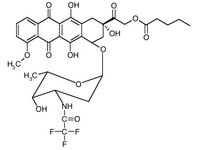Wc would like to present an overview of a research programme thai aims to improve drastically the stateof-the-art in shoulder joint replacement surgery. Development ol Improved cndoProstheses for the upper Extremities (DlPEX). as this effort is called, is a clinically driven multi-disciplinary programme consisting of many contributory projects. Within the project two main directions of research can be distinguished: the development of an improved shoulder prosthesis and the improvement of the surgical process. For this audience, we would like to present our approach to the improvement of the surgical process.
A newly designed visualisation platform called DSCAS (Delft Shoulder Computer Assisted Surgery) will play a central role within the DIPKX project.This platform is not only able to visualise CT and MRI datasets with a range of different algorithms, but is also able to calculate parameters that are essential for surgery and extract information from these datasets. The extracted information serves as input for the Delft Shoulder Model, an inverse dynamic musculo-skeletal finite element model, with which the effect of surgical decisions on the functional outcome, i.e. range of motion, stability of the joint etc. can be predicted and visualised.
Concerning per-operativc guidance two approaches are currently studied - a camera-based approach and mechanical approach - that have both their advantages and disadvantages. Comparison of the two approaches in an experimental setting as well as in a clinical setting is part of the DIPEX project.
The ultimate goal of this part of the DIPEX project is to create a surgical support infrastructure that can be used to predict the optimal surgical protocol and can assist with the selection of the most suitable endoprosthesis for a particular patient. Subsequently, this support infrastructure must assist the surgeon during the operation in executing his surgical plan.
E.R. Valstar. CP. Botha. P.M. Rozing. F.H. Post. F.C.T. van der Helm, A.M. Vossepoel
PO Box 9601). Leiden Universiiv Medical Center,
Leiden, 2MM RC, The Netherlands
Copyright British Editorial Society of Bone & Joint Surgery 2004
Provided by ProQuest Information and Learning Company. All rights Reserved



